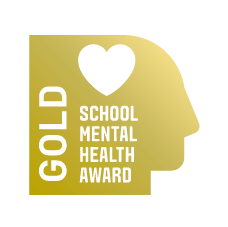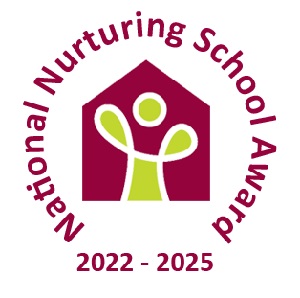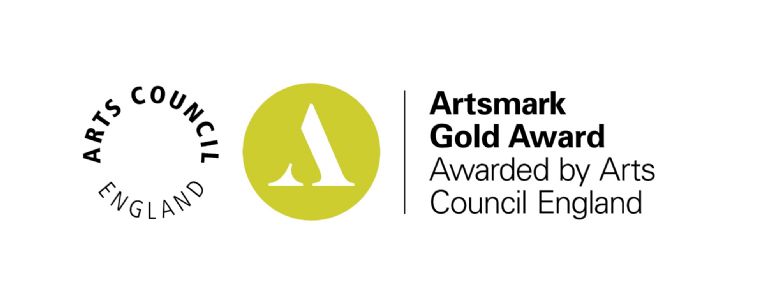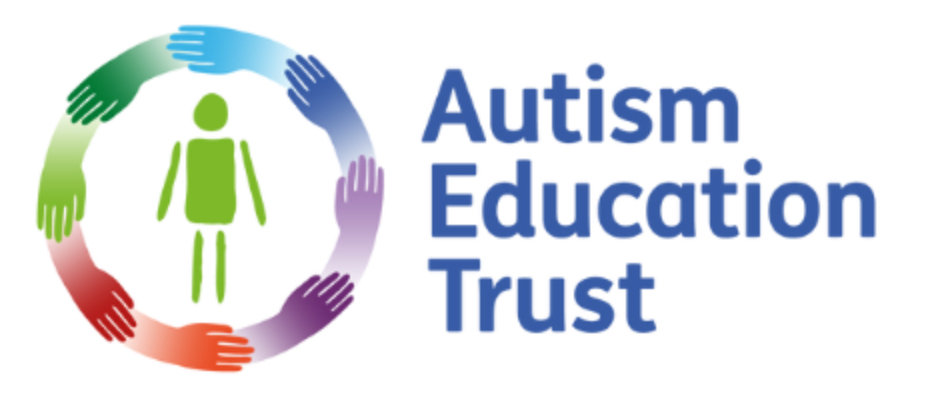Phonics
This is the programme we use to teach phonics at Warden House. We send home information and ideas for games every week so that you know what your child will be learning in school. It really does make a big difference when you practise things at home, and we’re sure your child will be keen to show you what they’ve been learning too.
The technical bits …
- Phoneme – a sound in a word.
- Grapheme – a letter (or sequence of letters) that represents a phoneme.
- Segmenting – breaking words down into phonemes to spell e.g. ‘cat’ is spelt c-a-t.
- Blending – building words from phonemes to read e.g. ‘p-a-n’ is read ‘pan’.
- Digraph – a 2 letter grapheme where 2 letters represent 1 sound e.g. ‘sh’ in ‘ship’.
- CVC word – describes the order of graphemes in words (consonant-vowel-consonant). They are usually 3 letter words that children start to read and spell, e.g. ‘mat’ or ‘van’.
Don’t worry too much about the technical terms, but it’s useful to know in case you hear your child say any of them.
Phase 1 - initial sounds
Phase 1 covers rhyme and alliteration and identifying the initial sound in words. Children also learnt to blend and segment words orally, through ‘sound-talk’ and metal mike games. It’s important to continue practising these skills to make sure your child’s learning is really embedded.
Phase 2 - learning letter shapes and sounds
There are 3 skills children need to master when learning letter recognition:
- what the letter shape looks like
- what sound it makes
- know what begins with that sound e.g. ‘s’ for sock.
Please do use the flashcards we send home. Some children will remember the letters with the help of the ‘jolly phonics’ action; some may need a visual reminder (e.g. you could draw an apple next to the ‘a’); some will just pick it up instantly.
Pronouncing the sounds correctly is very important. Many of the phonemes are said “quietly”, e.g. ‘p’ as though you are puffing out a candle, rather than saying ‘puh’, or ‘m’ is pronounced ‘mmmmm’ as though something is yummy, rather than saying ‘muh’. The ‘Jolly Phonics’ actions that we send out tell you how to pronounce each sound. Saying the sounds correctly makes it easier for children to blend words.
Games such as ‘I Spy’ are fantastic for helping children identify the first sound in words. Or maybe you could collect objects at home, for each new letter.
Make it fun!
Magnetic letters are a great resource to use for helping children to spell words – you could say a CVC word, e.g. ‘jam’, while you’re cooking dinner and challenge your child to make it on the fridge!
If you are interested in printing out some resources this website may be useful:
http://www.letters-and-sounds.com/phase-2.html
Twinkl also has a parents’ section, and you can print off resources and activities to use at home. www.twinkl.co.uk/resources/parents
Reading words
The skills your child learnt in Phase 1 should make it easier for them to start reading words straight away. In the same way that they blended sounds together to work out the word from ‘sound-talk’ and metal mike games, they will now begin to read simple words containing the letters they have learnt. For example, by the end of this week they will have been taught ‘s’, ‘a’, ‘t’, ‘p’ so can start to read words such as sat, pat, tap, sap. By the end of week 2 they will also know ‘i’, ‘n’, ‘m’, ‘d’ and will begin to read / make words such as pin, pan, mat, nip. It is important for the children to apply their new letter knowledge straight away, so we will be encouraging them to write/make simple 3 letter words and to sound out and read words from flashcards too. We will send home some for you to use.
‘Tricky’ words/keywords.
The ‘letters and sounds’ scheme is fast-paced and covers a lot of skills. As well as learning the letter sounds and shapes, we begin to introduce keywords – these are the most common words that appear in books. There are 45 keywords that Reception children should be able to read by sight, by the end of the year.
There are also some ‘tricky’ words that are difficult to sound out (due to the complexity of the English language) and these just have to be learnt, e.g. ‘the’, ‘said’ and so on. The best way to learn these initially is by holding up flashcards, and this is what we do in school. We then display the words around the whiteboard and refer to them during the day. Maybe you could put them on your fridge, or your child’s bedroom wall!
Although flashcards help children learn to read single words, it’s also important that they start to recognise them in the context of books. When you’re reading a story with your child, challenge them to see if they can find a certain word on each page e.g. ‘the’, and praise them for doing this correctly. Encourage them to first think what sound that words start with, and then to look for that letter on the page. Have a go at sounding out the word (if it’s a CVC word) and read the word. You’ll be amazed at how their confidence suddenly rises, as the words on a page start to mean something to them!
Learning to read is a long and complex process, and starts when children begin to notice letters in the world around them, maybe on road signs or on the TV. Listening to stories or retelling them through the pictures or from memory is usually the next stage, and in doing this children are also developing their language and vocabulary. This is all before the actual decoding of words, and the beginning ‘reading’ as we adults know it!
Early reading
Children often begin reading by retelling their favourite story over and over – they probably have a favourite book that you have read a hundred times, so now they can tell it word for word…and probably even know when you skip a few words! This process can seem tiresome to adults(!), but it is developing children’s vocabulary and story language, and helping them to learn the sequence of stories with a beginning, middle and end. It also teaches them to look at the pictures for clues to help them tell the story, and this is a strategy we teach to help them when they are reading words in books. Things you do naturally, such as asking your child questions about the story as you read it, predicting endings and so on, all form part of the reading journey too, as it makes children think about what they are listening to. Later on, this ‘comprehension’ is important to check children are understanding what they have just read.
Guided Reading
We have a daily ‘shared reading’ session where we read a big book story as a class, encouraging the children to look for clues in the pictures, asking them questions on what they have heard (comprehension), and modelling how to read.
Once a week, each child has a ‘guided reading’ session. This is where we teach the skills of reading with a small group. We talk about the specifics of books, such as title, author, front cover etc, and teach the children strategies to help them learn to read.
Books
All our reading books have been levelled into colour bands, and each box contains books from a range of reading schemes. The children have free choice of books from their colour level. We expect children to change their book regularly (hopefully daily, but at least twice a week), and you must sign their yellow book to say you’ve read with them – even if it’s just a few pages per night.
We cannot overemphasise how important it is for you to read with your child – children who have this regular support and practise make far more progress.
We regularly assess children’s progress but a general rule of thumb is for them to read 10-20 books from each box before moving up to the next level.
Some children will bring home books without words initially (light blue box). This pre-reading stage is just as important as books with words, as it develops their story vocabulary and knowledge of books and encourages all the skills needed to tackle so please do take time to ‘read’ them with your child. They love making up stories from the pictures and will enjoy reading to you instead!
Strategies
Start by asking your child to look at the front cover of the book – which characters can they see? What do they think the book might be about? Then ask them to find the title and point to the first word. Work out the title together then turn to the first page.
Always encourage your child to look at the picture first – this will give them an idea of what they writing might say, and just satisfies their interest and curiosity! Never cover up the picture; instead, you can isolate individual words or ask them to point to certain words after they have read the sentence – e.g. can you find the word ‘and’?
Encourage your child to apply their phonics skills to decode and read words. When faced with a new word, encourage your child to say each sound and then blend them together to read the word, e.g. m-a-n ‘man’. As they grow in confidence and start to recognise words they will not need to sound them out each time, but for now, it’s a good skill to encourage. This is most useful for CVC words and learning high frequency words.
There are also some ‘tricky’ words that are difficult to sound out (due to the complexity of the English language) and these just have to be learnt, e.g. ‘the’, ‘said’ and so on. Tell your child the word initially and then ask them to point to it every time it appears on the page to help them to remember it.
If your child is stuck on a word, recap what you’ve read so far then look at the picture and try and guess what the word is. Look at the first letter and see if it matches, e.g. if the word was ‘bicycle’ – it starts with a ‘b’. Would ‘boat’ be a sensible guess? No, as there isn’t one in the picture! What sound can you hear at the end of ‘bicycle’? Can you see an ‘l’ near the end of the word? Re-read the sentence to see if ‘bicycle’ makes sense.
At the end of the book, ask your child what their favourite part was / what the book was about / what happened when…, as this develops their comprehension skills and checks they have understood what they’ve been reading.
Writing
Children develop at different paces, but generally, go through the same stages.
- First, children simply make marks on paper. These are often lines or squiggles that just look like scribble to us, but by doing this children show that they have learnt the difference between print and pictures.
- The next stage is to say what those marks mean – often they tell us it says ‘Mummy’ or their name.
- Next, they may begin to include some letter shapes in their writing, often letters from their name. We call this ‘emergent’ writing. Most children will be able to say what their writing says, and in class we scribe this for them underneath to record that they are at this stage.
- Once children are secure with their phonic knowledge, so can hear sounds in words and start to recognise some letter shapes, we encourage them to apply this to their writing. Children may only represent the initial sound they can hear in the word first, but some will be able to write the final sound too; e.g. ‘p c’ for ‘park’. Although it still doesn’t look very impressive, this is brilliant progress!
- Children then move on to writing some simple regular CVC words, such as ‘tap’ or ‘chip’, and may be able to have a go at writing longer words by using their phonic knowledge and sounding out the word to themselves, e.g. ‘e l i f t’ for ‘elephant’.
- By the end of the Reception year, many children will be able to put words together to write a simple sentence. We encourage them to remember the high-frequency words they have been learning to read, and to use them in their writing, especially common words such as ‘and’ and ‘the’.
We encourage children to have a go at mark making/writing in as many ways as possible at school and try to think of ways to inspire the boys in particular. For example, if children wish to ‘keep’ the model they have made in child-initiated time they must write a label, or we have Policeman’s notebooks outside; the addition of envelopes or a post box in the classroom always causes a lot of sudden interest in writing … and of course sending cards and letters to Santa in a few weeks’ time!
Encourage them to use alphabet sheets if they aren’t sure how to form the letter.
Don’t worry if your child isn’t ready to do all these steps yet, and make sure you praise whatever they have done! Learning to write is a gradual process, made up of many skills, and what they know will depend a lot on what they’ve learnt in ‘Letters and Sounds’ and how many keywords they know.
Now that you know what to look for, please do praise any of your child’s efforts at writing … even if it looks like scribble at this stage! It’s all good evidence that your child is learning to write and we would love to see what your child is doing at home.
Don't forget to share any of your child's efforts with us, either by sending into school, or through adding an entry on to Tapestry.
We hope that you have found this information useful.








